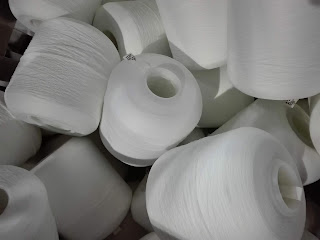Cause and effect diagram (Ishikawa Diagram):
A company has a problem that they need solving. For sake of example, it is a quality issue. So the company gathers a team together to figure out what is happening to truly cause this problem. They have all heard of a “root cause analysis”, and would like to find the true root cause that is causing this problem. They gather together in a room and start to brainstorm what the possible causes are. But they quickly realize that their brainstorming session isn‟t focused at all, but they keep going.
They come up with what they think is the true root cause, and find a corrective action for it. They implement the corrective action, only to find out later that while they have helped the problem, they haven‟t actually found or fixed the root cause. This is the hazard of not using the cause and effect diagram during a root cause analysis.
A cause and effect diagram, simply put, provides a way for the average manager or office worker to be able to effectively come up with a true root cause of a problem. It is a process that can be repeated by anyone with a basic level of understanding of the system or the processes involved. It also allows the team to be able to approach extremely complex problems and situations by breaking it down into the fundamental components of what usually goes wrong in most situations.
The first cause and effect diagram was created in 1943 at the Kawasaki Steel Works to depict the work factors involved with a process. Because of this, they are sometimes called Ishikawa diagrams, after the original presenter, Kaoru Ishikawa. They are also called fishbone diagrams in some circles because of their resemblance to fish bones.
It is very uncommon for a quality problem, or any problem in today‟s high tech world, to be simple. Often, they contain many different factors and interactions that are hard to conceptualize when sitting in a meeting room. A cause and effect diagram breaks these complex problems down into easier, more simplified components, so they can each be individually addressed for determining their root cause.
A good diagram will break down the issue into major causes and sub causes, leading to the eventual discovery of root causes, which is the end goal of all six sigma processes. It will also provide a visual understanding of the problem for all parties involved, leading to a better understanding of the problem, and provides a way to focus on the correct issues to discuss and analyze.
Fig-01
There are very few instances of brainstorming sessions that should not include a fishbone diagram. An example of a fishbone is contained in Figure (1). The cause and effect diagram should always start with the effect that you wish to change on the right side of the paper, in the case of the above example, the “Leaking Pump”. You should then draw the backbone of the fish, a horizontal line from left to right. Include the primary causes, or even just a general category of cause on diagonal lines that are alternating between above and below the backbone of the fish. This can be seen in Figure (1) by the categories of “Leaking Seal”, “Leaking O-Ring”, “Misaligned Leakage”, “Improperly assembled seal kit”, “Environmental”, and “Ruptured Seal”.
From those lines, you should branch off into additional diagonal lines that indicate the secondary causes, or the causes of the primary causes. For example, in Figure (1), the “Static vs. Dynamic” and “Cold Weather” causes are the root causes. From there, you can branch off a third time from each secondary cause, which will indicate the root cause that should be addresses. Not every secondary cause is going to have a root cause, as the secondary cause is sometimes the root cause of the problem. Figure (1) doesn‟t have any third level causes, as the second level each contain the true root causes.
Once you have done this, you should have a good, thorough, cause and effect diagram. From here, you should mark the causes that you plan on correcting, and then brainstorm a corrective action, or many corrective actions, that will address the root cause.
Theoretically, if the root causes of a problem are eliminated, the problem will either disappear, or be dramatically reduced. In reality, what happens in many situations, is that the problem changes into a new problem with the same symptoms, making it look like the root cause was not the true root cause. What actually happens is that the root cause changes, but causes the same problem. Many times, the reason for this is that the new root cause was being masked by the bigger, original root cause.
Many companies require all of their employees, from the hourly worker to the CEO, to be able to correctly make a fishbone diagram and participate in the root cause analysis. It is a simple process that can be understood by all, yet can lead to dramatic changes for the better. It is in a company‟s best interests to be able to fix a lot of their problems by using the cause and effect diagram by any and all personnel.
If a company is interested in a process that is simple, straightforward, and more often than not attacks the root cause of the problem, all employees should be well versed in creation and execution of a fishbone, or cause and effect, diagram.
Collected by:Md. Tarikul Islam JonyMail:jonytex073@gmail.com+8801912885383










